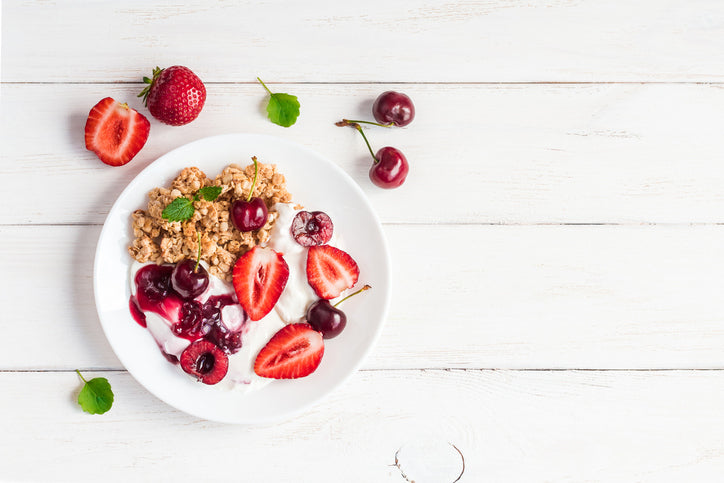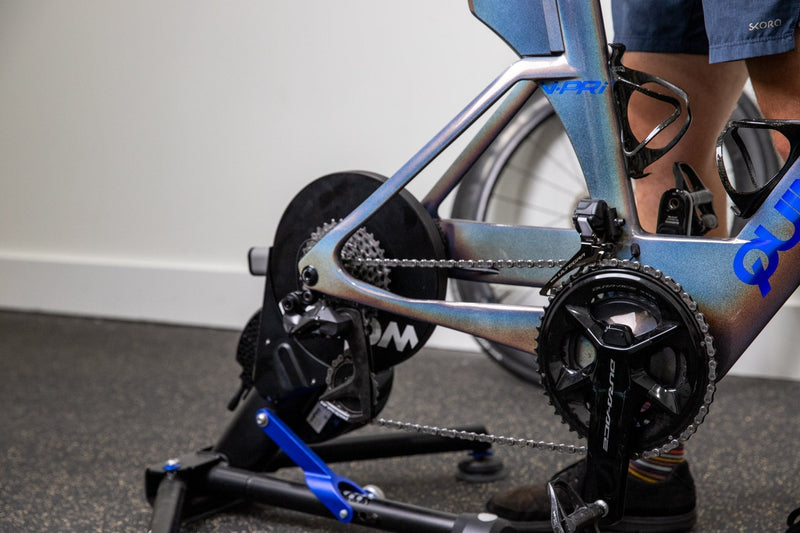SPORTS NUTRITION BASICS FOR TRIATHLETES

This article was written by Katie Elliott, MS, RD, Sports Dietician and USAT Coach with Elliott Performance & Nutrition.
Sports nutrition is the fourth discipline in triathlon. It’s vital to fuel your training and racing in addition to optimizing your day-to-day diet if you want to succeed. Unfortunately, sports nutrition can feel overwhelming. But trust me, it doesn’t have to be. If you focus on these four simple principles, you will be well on your way to making nutrition your secret weapon.
Eat the right things, at the right time to make the most of your training
When you eat and what you eat are important if you want to realize the greatest benefits from your training. Fueling windows that you want to pay attention to include: pre-workout fueling, during exercise fueling and recovery nutrition. While it is important to note that everyone is a little bit different when it comes to food for and around exercise, below you will find the reasons why certain foods are preferable in addition to some meal/snack examples.
Pre-workout Fueling
Eating before you train provides energy for the workout and tops off your body’s carbohydrate/glycogen stores. Making sure you are ready to rock (from a fueling standpoint) can increase performance and ensure that you meet the goals of your session. Plan to fuel during the window 1-4 hours before your workout with foods higher in carbohydrate, moderate in protein and lower in fat and fiber. The closer you get to your training session, the smaller and simpler the meal or snack should be.
Examples of what to eat at different times before a workout:
2-3 hours before a workout:
WHAT: 2 slices whole wheat toast with 1T almond butter and 1 banana
WHY: With 2-3 hours before a workout, your body has time to digest a slightly more substantial meal or snack. The suggested almond butter toast option includes some protein, fat and complex carbohydrate. It is not a huge meal (like Fettucine Alfredo at Carraba’s!), but it isn’t ultra simple or small either either (like a gel). The complex carbohydrate and mix of macronutrients provides slower acting fuel to keep you energized and feeling fuller longer. This is because fat, fiber and a mix of macronutrients are digested more slowly than simple carbohydrate alone.
1 hour before a workout:
WHAT: A bar such as an 88 Acres bar or a Base Performance bar.
WHY: Bars generally have small amounts of most macronutrients and tend to be fairly simple. The simplicity and the smaller nature of this snack makes it doable one hour before training. As you can see the calories and amounts of carbohydrate, protein and fat are smaller than the almond butter toast you might eat 2-3 hours in advance.
30 minutes before a workout:
WHAT: Clif Shot Bloks, a Honey Stinger Waffle or a banana
WHY: This is a small snack with simple, easy-to-digest carbohydrate. This is a great idea if you have an early morning workout and don’t have time to eat. This can also work if you ate a few hours prior to training and need a little something extra before you start your session. The fact that this is both small and easily digestible will prevent you from feeling sick or overfull during training.
Fueling During Exercise
Carbohydrate stores are somewhat limited in the body (people generally have 1,600-2,000 calories worth of carbohydrate/ glycogen stores). Since carbohydrate is the major fuel source for exercise, it is important to maintain an adequate supply for the body to tap into. If you are training for 60-90 minutes or more, providing some extra, easily accessible carbohydrate has been shown to extend the time you can maintain your performance.
Examples of what to eat and drink for different length workouts:
- A workout lasting 60 minutes or less [that isn’t a race]: Drink water or low-calorie tablets like Nuun or Precision Hydration effervescent tabs, no food needed
- A moderate to high intensity workout lasting 60-90 minutes or more: Drink sports drink with carbohydrate and electrolyte (think Skratch, Base, Precision Hydration, Gatorade Endurance, etc.)
- For workouts lasting three hours or longer: Drink sports drink with electrolytes and carbohydrate and add food (think Honey Stinger Waffles, Base Bars, Clif Shot Bloks, etc.)
Recovery Nutrition
Want to get the most of those hard intervals you just suffered through or be ready for the day’s next workout? Then pay attention to your recovery nutrition. Post-workout fueling promotes muscle repair and replenishes carbohydrate stores. This means you can come back stronger after a workout and prepare the body to perform in the next training session. After a quality workout or long training session, have a meal or snack with carbohydrate and protein (generally speaking have 3 parts carbohydrate to 1 part protein). The longer the workout is and the bigger the athlete, the larger the meal or snack should be. If you have another workout, just be aware of the pre-workout guidelines above.
A few examples of my favorite recovery nutrition go to’s:
- Siggi’s yogurt + Udi’s granola + dried tart cherries
- Two slices of toast + veggie and egg scramble + salsa
- Here are some options if you don’t have access to a refrigerator or other form of real food for recovery. Cocoa Elite Complete Recovery Protein, SIS Rego and Horizon chocolate milk with a few almonds are a few. Vega One Sport Protein + a banana is a great option for vegans.
Emphasize Nutrient Density Outside of Training Windows
Fueling close to and during workouts often requires an athlete to consume simpler, more easily digestible foods to minimize the risk of stomach issues. Most of us know from experience that having a half of a bar is going to sit a lot better than having a salad thirty minutes before a track workout. However, it is important to balance the simpler fueling of training with fueling for general health if you want to maximize performance. In fact, research suggests that a focus on more complex carbohydrates as well as plant polysaccharides may positively influence the athlete’s gut microbiome, which is important for delivery of water, nutrients and hormones during activity. [1] Therefore, during windows, when you aren’t training, emphasize the following nutrient-dense foods:
- Vegetables
- Fruit
- Whole grains (e.g. quinoa, buckwheat, brown rice, etc.)
- Nuts and seeds
- Lean meats (chicken, fish, turkey)
- Legumes
- Healthy poly- and mono- unsaturated fats (e.g. flaxseed, walnuts, avocado, fatty fish, etc.).
Pay attention to hydration
Staying well hydrated during training and racing improves performance and protects health. You’ll want to nail this because even small amounts of dehydration (sweat loss of 2% of body weight) can negatively impact performance. You also need to pay attention to daily hydration needs and replace what you lose during your training sessions. For this section, I want to talk about what you need without any exercise first. I then want to cover the additional drinking you will need to do when you add in workouts.
Baseline Fluid Needs
You need a certain amount of fluid to function in daily life without any training. This amount is easy to figure out. Take your weight in pounds and divide by two. Subtract 10% of this number since foods naturally contain water (especially fruit and veggies). This final number is the amount of fluid (in ounces) you need to drink before you factor in sweat loss from exercise.
Example: a 130-pound person needs 59 ounces per day (roughly 1.75 Nalgene bottles or 1.5, 24-ounce bike bottles).
Another easy way to ensure you take care of your overall needs is to monitor your urine color throughout the day. If it is clear, you are likely well-hydrated to over-hydrated. If your urine is lemonade yellow, you are likely well hydrated. If your urine is apple juice color, you need to drink more.
Hydration during and after exercise
When you exercise, you sweat and lose fluid, which means you need to drink above and beyond your baseline fluid needs to perform well. Because we all lose different amounts of sweat, the amount we need to drink during exercise varies between athletes. Sweat rate testing and sweat concentration testing are examples of evaluations an athlete can use to get more scientific about hydration. However, the following basic plan provides a good starting point. Begin by bringing 1 bottle of fluid for every hour you will be exercising. Plan on drinking at least every 10-15 minutes (you can drink as much or as little as you want at every interval). In general, most people will need roughly 16-24 ounces of fluid per hour of moderate to intense exercise. Make sure you listen to your body. Are you dying for fluids? If so, drink more. Do you have sloshy belly? If so, drink a less. After a workout, make sure you have fluid available. Drink to thirst along with your recovery meal.
Practice your race day nutrition
Race day fueling plans are personal to you, as an individual. They should take into account what tastes good to you, your stomach tolerance, what is convenient (e.g. available on your race course) as well as your size/needs as an athlete. It is important to begin thinking about this early so that you can practice your fueling plan and avoid a bonk or porta-potty tour (or both!). You never know for certain if a product or strategy will work for you, so you should try it out before you get to the start line. Always remember “nothing new on race day.” Even if there is something at the expo that looks AMAZING, don’t implement it without at least one test run.
In Conclusion
Optimizing nutrition for performance and health can really move the needle with it comes to endurance performance. The good news is you don’t have to have a PhD to make this happen. Following the simple principles outlined in this blog will take you a long way toward success. As you work toward a better diet for health and sport, have fun with the nutrition piece of the puzzle. A plethora of healthy, tasty recipes exist. Try them! You can even make your own sports fuel (look up Feed Zone Portables)! If you want a seamless approach to healthier eating, there are a lot of new companies that want to make good nutrition easy. Check out Sun Basket or Green Chef for easy meal prep minus grocery shopping. Another tactic is to simply take a stroll around a Whole Foods or Trader Joe’s for simple solutions. Bottom line, embracing the fourth discipline in triathlon will help with those personal bests and podium finishes.
Other Information
Katie Elliott, MS, RD, Sports Dietitian and USA Triathlon Coach
Website link: www.elliottperformanceandnutrition.com
Instagram Handle: @elliottnutrition
[1] Clark, A. and Mach N. (2016). Exercise-induced stress behavior, gut-microbiota-brain axis and diet: a systematic review for athletes. Journal of the International Society of Sports Nutrition. Volume 13:43. Retrieved from: https://jissn.biomedcentral.com/articles/10.1186/s12970-016-0155-6



